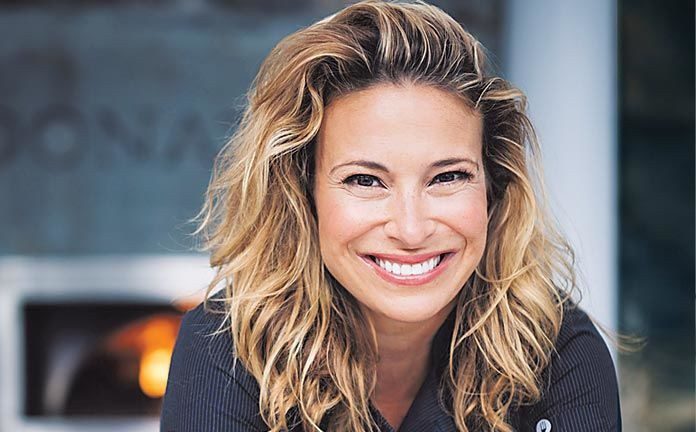
Long Island native Donatella Arpaia grew up in the restaurant industry. Following a brief career as a corporate attorney, Arpaia opened her first restaurant, Bellini in 1998. Zagat named Arpaia, “The Hostess with the Mostest.” Through the years, her portfolio of restaurants have been nominated for virtually every major industry award including a James Beard Award nomination. She has also emerged as a staple on television as a judge on The Food Network’s Iron Chef America and The Next Iron Chef.
Total Food Service sat down with Donatella Arpaia to discuss how she has now set her sites on reinventing the pizza industry with her new Prova concept that has debuted at NYC’s Grand Central Station.
Tell us a little bit about your introduction into the restaurant and the food service industry. How did it all come about?
You know how people say they grew up in the restaurant business? I literally grew up in the restaurant business because my parents are both immigrants from Italy. By the time he was 30, my dad opened his first restaurant in Long Island called La Tavernetta. My backyard was the restaurant kitchen. My mother would host and they couldn’t afford a babysitter, so my crib was next to the dishwashing station because it would lull me to sleep. I literally grew up in the business.
Did your family want you to go into the business?
No. I’m the youngest of three, and my father did not want me in the business. My brother was groomed for it. My dad didn’t want me to be in the business, not because he didn’t think I could do it, but it was a whole different world back then. He thought that the toll on restaurant workers was terrible and he wanted me to be a lawyer or a doctor, so I went the lawyer route. He said lawyers can do anything they want.
Did the training to be a lawyer help you when you finally came back to the food business?
Well, I became a lawyer and four months later I told them, you said if I become a lawyer, I could be whatever I want. And I’m quitting and I’m going into the restaurant business. I was living above my brother’s restaurant in a studio apartment at the time. And I would come home every night and eat at his place. And one night he got stuck and I started helping him and I had my “ah-ha moment.” So a few months later I found a location. I had some money from a very small trust fund but not enough to open the restaurant. So I secured a bank loan but then, of course, my dad’s like, “No, I’ll give you the money.” And I opened on a very slim budget, but within the first year I paid him back. And that was the start of my restaurant career.
Where did you go from there?
It was hard in the beginning. The first year, I had no customers. I had no name in the business. I had no celebrity chef. I had nothing. I did have an incredible sense of hospitality and service, and literally everyone who came in I made feel special. I wrote hand-written notes to everyone. Really, back then, I based my reputation on my personality. So it was good news and bad news. Three years later I was the owner of a very successful restaurant but I can’t leave it because people won’t come in unless I’m here.
Is that where your desire to provide only the best service originated?
I was very obsessed with technology, and tracking people in terms of how to give good service. So, I was always looking to replicate that sense of service. Then I met David Burke, and a few years later I opened up davidburke & donatella, and that really put me on the map. Then I started doing TV and media to get people interested in the restaurant.
Was it ever hard for you to be out in front like that on TV?
It’s kind of funny because I had terrible stage fright and it was very difficult for me in the beginning but now I give a lot of talks to young women and people about how to overcome your fears. What helped was forcing myself to constantly face my fears and be in an uncomfortable position until one day I finally forgot that the camera was there. For two years I was very nauseated before going on air but the good news is, when the producer for the Food Network approached me to judge Iron Chef, I was at that point where I was more prepared and I did well, and that’s when they asked me back and things continued.
How did things end with davidburke & donatella?
I’d sold my interest at davidburke & donatella, right before the market crash. I was very lucky. But we made peace, to be quite frank, and we’re very good friends now. He wanted to open up just more David Burke’s, so I said, it’s fine. We’ll part ways. It was extremely successful and he continued on at David Burke’s. He called it Townhouse for many more years to go. And that was it. And then I started to find other projects to work on.
What did you take away from your experience with David?
I was quite unprepared and overwhelmed. I came from a largely mom and pop type of restaurant where we knew every customer. I truly wasn’t prepared for the success. Unlike my beginnings, it was a very corporate environment but I learned a lot from him in terms of systems and structures.
What went into your decision to go to culinary school?
I always had a great food knowledge, growing up in a food family, and I would spend every summer in Italy. My mother had a farm (she was one of 10!), and they were all great cooks. But I kind of felt that I was always beholden to, or at the discretion of my chef. And I wanted to have a firmer knowledge of every aspect of a restaurant. I also felt that it would give me more power.
I’m definitely a student at heart. I love books, I like to constantly improve and learn about and master everything and this is so appropriate. When I was starting out, I had no intention of going behind the line and seeing what went on there. It’s not what I wanted, but I wanted to be able to get my hands around everything it takes to build a successful restaurant. So I went to the Institute of Culinary Education, back then called French Culinary.
So what happened then?
I was still running my restaurants while I was in culinary school. I had these kids next to me saying; didn’t I see you on Iron Chef last night? What the hell are you doing here? I was filming a lot. And then I opened up a Greek family style restaurant, Kefi, which is still open today, very successful. And then, about five years ago, right around the time I met my husband, I was planning to open a Neapolitan pizza restaurant, based on my love of pizza from my childhood. So I opened Donatella in Chelsea. But the timing of it didn’t work out for me. At the same time I opened my restaurant, I also got married and pregnant – all within four months. I had a difficult pregnancy so personally; I was kind of removed from the restaurant. And by the time I came back, I decided it was best to just sell. As you can imagine, my life had changed at that point. But I wasn’t done! For a while I had seriously been thinking about moving into upscale fast casual and that moved me into this project, Prova Pizzabar, that I opened in Grand Central a month ago.
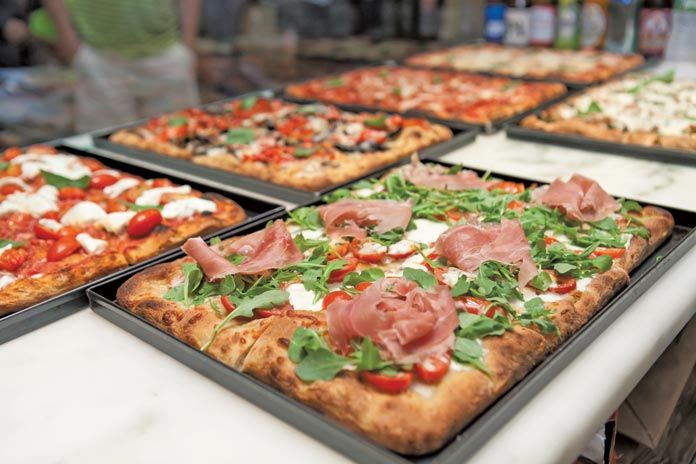
What was that like?
You don’t just open up in Grand Central. You have the bidding process, selection. But I really, really wanted to, and what I think I learned – through all my good partnerships, bad partnerships, cycles of the economy, staying in New York — I took all my lessons and said, this is what I wanted to do. Number one, location is so important. Location, location, location. Number two is who you select as your partners. That’s really important. You have to be on the same page. And everyone should have his or her different, defined roles. Nothing should be nebulous. Number three, be appropriately funded. So all those things were in place for this concept.
How did you put the menu together?
People love the old-school red sauce classics like eggplant Parmesan, lasagna. But you don’t find them in high-end restaurants. You find them in the local pizza joints. And they’re really not executed well.
So the challenge is to execute at a high level with good ingredients in a way where your cost of goods are in line and you can mass produce. That’s why this pizza is not Neapolitan, but it is inspired by Neapolitan pizza in the flour that we use. But we take more of a hybrid approach between Neapolitan and Roman style pizza, Romana which means cut by the slice. The dough is also very special. It’s matured over three days, which means it takes up a lot of space, it’s very artisanal in that way. But the process of fermentation occurs outside the body, not inside the body, so you have a very light, digestible healthy pizza with a focus on premium toppings.
When you’re dealing with something like Grand Central, you’re paying a lot of money for space. So do you have a commissary elsewhere? How do you make this work?
No, right now, we don’t, because it’s the first location. But the goal was by our third location to have a commissary. And honestly, space is the biggest issue. We’ve known that and we looked at two different models. It was very tight but we made it work.
What was the hardest part?
Here I am, opening up my first fast food offering. I’m dealing with the front counter. But I’m also dealing with the 45-seat dining program and a full bar. So it’s a hybrid concept where we have booths.
I wanted the power of making more dough if we run out, in my hands, as opposed to it being in New York and dealing with that other element of commissary. But we’re actually already looking to put a bid in on a second space, a high-traffic location in New York City that is close to Grand Central and has a lower space that could already be a commissary. When I spoke with my partners, we knew that I had to create a highly replicable product but it was the first space in the stage. It would’ve been cost-prohibitive to have a commissary for just one location.
What does your restaurant look like?
I would say it’s the industrial look. It’s a definite natural feel. We have hardwood from the Amish who make the floors, we have these one-of-a-kind light fixtures that came from a bar on a ship from the 1950’s. But I had to remember, too, that this is Grand Central; it is high-traffic so you have to keep that in mind when you’re designing it. You wouldn’t know unless you touched them that the floors are made of ceramic. They look like distressed wood.
You’re in a marketplace now with people like Blaze and those sorts of concepts that are into a quick pie. Is this a quick pie?
Well, for one thing, our ovens are from Italy, Moretti Forni. The ability to control the temperature is so important for the chef and the stone. But pizza-making all starts with the oven and the hand of the person making it. We won’t require a dedicated pizza-maker. My chef, Giuseppe Manco is a Master Pizzaiolo and has won a number of awards. The challenge is going to be to create a system and a commissary that can prep this dough to support multiple restaurants. Keep in mind we are talking about a 3-day proofing process and a two-stage leavening process.
What’s the price point?
By the slice, it goes anywhere from $4.50 to my truffle pizza, which goes up to $9. We’re actually experimenting now with personal pies because we just got the pans. So the personal pies will start at around $10. The price point is a little higher in Grand Central because the rent is so expensive there.
Are your pizzas so great because of the dough?
The dough itself is Poiselli flour. We did a lot of tests. And the technique is a very hard technique to learn and very laborious, but it’s great because you’re dealing with a very hydrated dough. Your regular New York sliced pizza, probably the hydration point is about less than 40 to 50%, Neapolitan is about 60-65%. This dough is about 80%, so you’re dealing with a very wet dough that’s very difficult to deal with, but that’s also what makes it so digestible and healthier and lighter. Our flour is non-GMO. It’s better than a lot of the whole wheat flour out there.
What about in terms of beverages?
I have a full bar, and liquor license. Drinking is a big part of Grand Central. I have a tremendous amount of regulars coming by Monday through Friday, either for lunch or that quick slice and a drink right before they leave. So it’s great to see that in the fast food environment, I have this feel of locals and regulars.
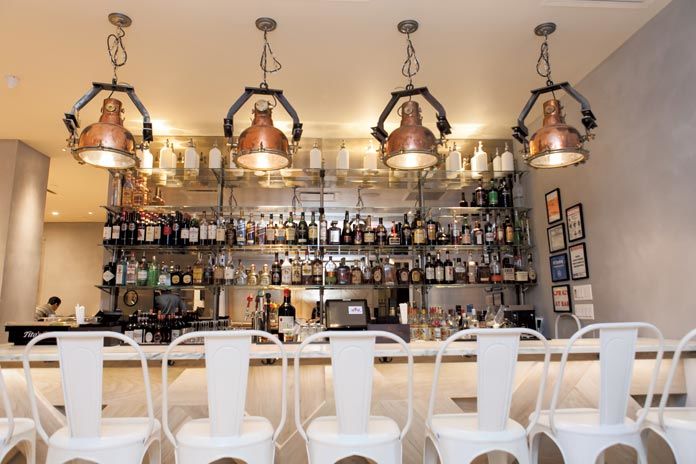
As you look 15 years later, what’s different or what’s the same in terms of being successful in this business today?
The whole food landscape changed largely because of the Food Network. Back when I was a kid it’s funny but the restaurateurs were more the stars than the chefs. People don’t realize that, but TV has changed and made us into celebrities, but I think at the core, restaurants are still about good food, good service. Technology has changed; everyone’s a critic now. In certain ways that’s good, because it takes the power away from some select few sometimes, but in certain ways it’s hard. The competition is fiercer than ever. You are dealing with an audience that has a more educated palette, through TV and travel. People who own or run restaurants aren’t just looking for who’s going to make the most money. They’re looking to create an experience. Most of the people are looking for experiences when they dine out. They want a story. They want to know, how are you packaging, what the ingredients are. I’m glad they care more about the food they’re eating.
What about opportunities for women in the industry today. Is there still a glass ceiling or is the sky the limit?
When I opened my first restaurant, I didn’t have a female working for me. Back then, in high-end restaurants, you only ever saw male servers. That’s how much it’s changed. I definitely think there has been a massive change in the past 15 years. The fact that you are even asking me is the point! I tell women, just be better than anyone at what you do. Love your craft and it will take care of itself.
To learn more about Donatella Arpaia and her restaurants, visit her website


















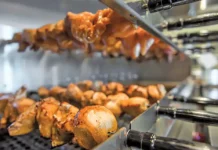
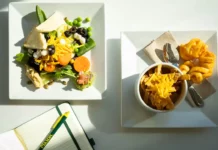

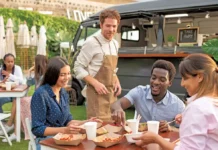

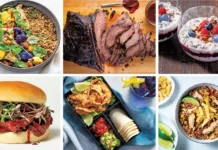
Comments are closed.